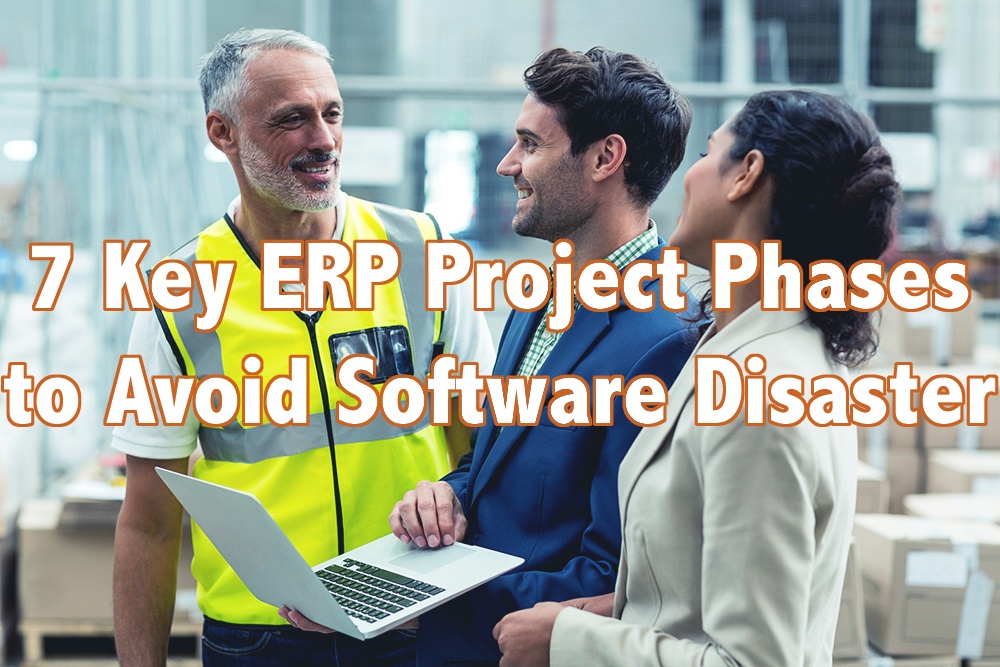
These days, ERP projects are notorious for being long, drawn-out and bloated with unplanned and excess costs. And with some of the very well publicized failure stories that we detailed in our blog post, it’s not too surprising that enterprise resource planning software has taken on a somewhat sour reputation. However, with the help of a well-defined plan signposted with specific ERP project phases, your next implementation doesn’t have to be one of those horror shows—and can truly provide your business with revolutionary change and cost-savings.
A carefully thought-through ERP implementation plan is crucial to ensuring a successful enterprise software project—with it you can set specific, measurable milestones to keep your team motivated and working towards tangible goals. Definitive ERP project phases also allow you to manage expectations for your project. Scope creep—when anticipation for an ERP solution outruns the actual, stated goals and budgets—can cripple your implementation project. If your project has smaller checkpoints to be met more frequently, then you can keep executives and stakeholders satisfied with your progress and knowledgeable on the feasible benefits the software will bring. Read on for 7 of the most common ERP project phases you should be planning out for your next software project.
Defining and Planning: Also known as the business process modelling stage, this should one of your most extensive and detailed ERP project phases. To understand the range of users and functionalities that you need your enterprise software to support, you need to do a total, top-to-bottom review of all of your employees and their functions and tasks. Often times, it helps to bring in a third party during this stage as they will be able to see past blind spots and conduct an objective full model that allows you to enter the next ERP project phases with confidence.
Selection: The order here is important—you should never start selecting an ERP vendor until you have all of your business processes and deliverables defined and planned out. You can only truly select the best software for your company if you know everything you’re going to expect that software to do. Simply hoping for the best or basing a decision on rough guestimates is a surefire way to end up with a system that can only disappoint you.
Pilot: The conference room pilot is one of the first ERP project phases where you can really start showing off all the benefits that an ERP system can provide for your company. These conference room pilots should be happening during the selection and testing process as you bring in a whole variety of users to test out your software and perform their tasks to see how the ERP can support it. This way, you can not only ensure that you are selecting ERP carefully, you can also start getting your employees excited about the new changes coming their way.
Technical Implementation and Integration: Once you have determined that your chosen system is the best vendor for your company and business processes, it’s time for the nitty-gritty part of the ERP implementation—the technical customization and integration of the modules and functions with your current systems. Whether you’re upgrading an exiting ERP system or putting an entirely new one in place, this is one of the ERP project phases when you’re going to need an expert in development, and someone with a knowledge of all the systems they will be working within during the implementation.
Training: Obviously, training should be happening simultaneously along with other ERP project phases, especially the implementation (though it is crucial for training to be constant even after go-live day.) 100% user adoption will ensure the success of your ERP project, and if users don’t know how to use the software properly or work with it, they will instantly become frustrated and abandon it. With no users, your ERP becomes useless—don’t let that happen. Make training entertaining; involve your staff members, truly listen to feedback and you’ll be on the way to a stellar training strategy!
Go-Live: It’s the day you’ve been waiting for throughout the long and complex process; the magical circle on the calendar that all these previous phases have been working up towards If you’ve completed all the previous ERP project phases, then go-live should largely be a non-event. You’ve gotten all your staff trained, your systems integrated, and built enough enthusiasm for the ERP; the go-live day should be a time for celebration; for you to start seeing how your ERP can meaningfully effect your business and enjoy the hard work that’s gone into every single step of your ERP implementation process.
Post Go-Live: Just because your software has gone live doesn’t mean that you can then sit back and relax. Sure, go-live is a time to congratulate staff and super users on a job well-done, and you should consider rewarding employees that have been particularly instrumental in your project, but that doesn’t mean that everyone can rest on their laurels after the celebrations. The time period immediately after go-live is highly sensitive—when small failures and outages can build up and set your entire ERP project out of sync. Make sure to have a contingency plan in place to deal with any possible common software glitch or failure to ensure your post go-live period is smooth sailing.
Wrap Up
Only once you have a solid, segmented implementation plan in place can you truly begin to dive into the depths of your ERP project. Measurable and marked project phases allow users to reward themselves for small successes and see the constant good they will be doing for the company in what can often seem like a long and arduous process.
To start your own ERP implementation today, or to get a failing project back on track, contact an expert at Datix today. We have over 18 years of experience with ERP implementations and proper organizational change management. We can help you with all 7 ERP project phases, no matter what stage you’re currently in.

